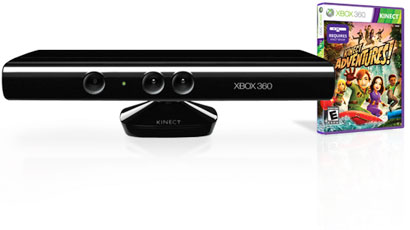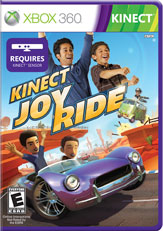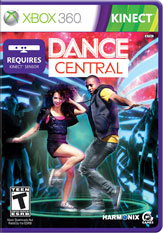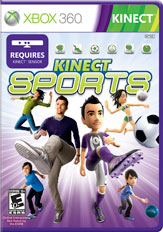I Played Kinect, and I Liked It
During my recent travels I came across a demonstration for the Xbox 360 Kinect in the Zurich Hauptbahnhof railway station. For those that don’t know, the Kinect is Microsoft’s latest peripheral for the Xbox 360 that allows gamers to interact with the console without the need of a controller. The Kinect is a sensor bar with a built in RGB camera that players can place in front of their television. The camera has 3D motion capture, facial recognition, and voice recognition capabilities that will input your full body movements and voice commands to control the game.

The Games
The games that were available at the demonstration were Kinect Joy Ride, Dance Central, and Kinect Sports. Kinect Joy Ride is a cartoon style racing game that can be played by 2 players locally, or 8 players via Xbox Live. Dance Central is a rhythm and music game where players compete in dance-offs against each other, or the computer. Kinect Sports allows players to participate in soccer, boxing, volleyball, bowling, table tennis, and a variety of track and field events including track running, and hurdles.
The Controls
I was able to play Kinect Joy Ride, and observe others playing Dance Central and Kinect Sports. To control the automobile in Kinect Joy Ride, I held my hands out like I was holding a steering wheel, and the on-screen vehicle would respond to the steering movements I made. To use an item (explosive, etc…), you need to hold your arm out to the side you would like to drop the item, and to get a speed boost you lean your whole body back and then push forward. This is where Kinect Joy Ride differed from the other two games, as it had specific gestures that were required while in Kinect Sports and Dance Central players’ full-body movements were mimicked by their on-screen avatars.
Impressions
While I was only able to play one-full race, my initial reaction is impressed. I assumed the car would be sluggish in relation to my hand movements, but it was very precise and accurate. If I turned my hand slightly, the car responded accordingly. If I made large sweeping hand movements the car would spin-out (as it should). When I observed individuals playing Kinect Sports I became more impressed, as every motion made by a player was accurately mimicked by their avatar. An example is one of the participants was a child, and he was waving his hands and shaking his legs, and the racer mimicked his exact motions. Another example is one participant was starting a race facing straight towards the camera and another was standing with his feet on an angle to the right, so the racers in the game took the same starting positions. Dance Central reminded me of Dance, Dance Revolution, except you were using your body to input commands, instead of a pad at your feet. The accuracy of tracking momentum was the most impressive part of Dance Central, as those who danced fast in real life were dancing fast in the game, and the same for slowing down.
Conclusion
So incase you haven’t figured it out yet, I am thoroughly impressed by this product which could have easily been a Wii knock-off, but instead takes motion gaming one step further by removing the controller. With the success of the Nintendo Wii and motion gaming, Sony and Microsoft have both responded accordingly. Sony’s Playstation Move motion controller was met with luck-luster reviews only scoring a 7.5 from IGN, and only time will tell if the Kinect is better received. The North American Launch date is November 4th 2010, and the European launch date is November 10th, 2010. Has the Wii finally met its match? I was impressed and I have the button to prove it.



